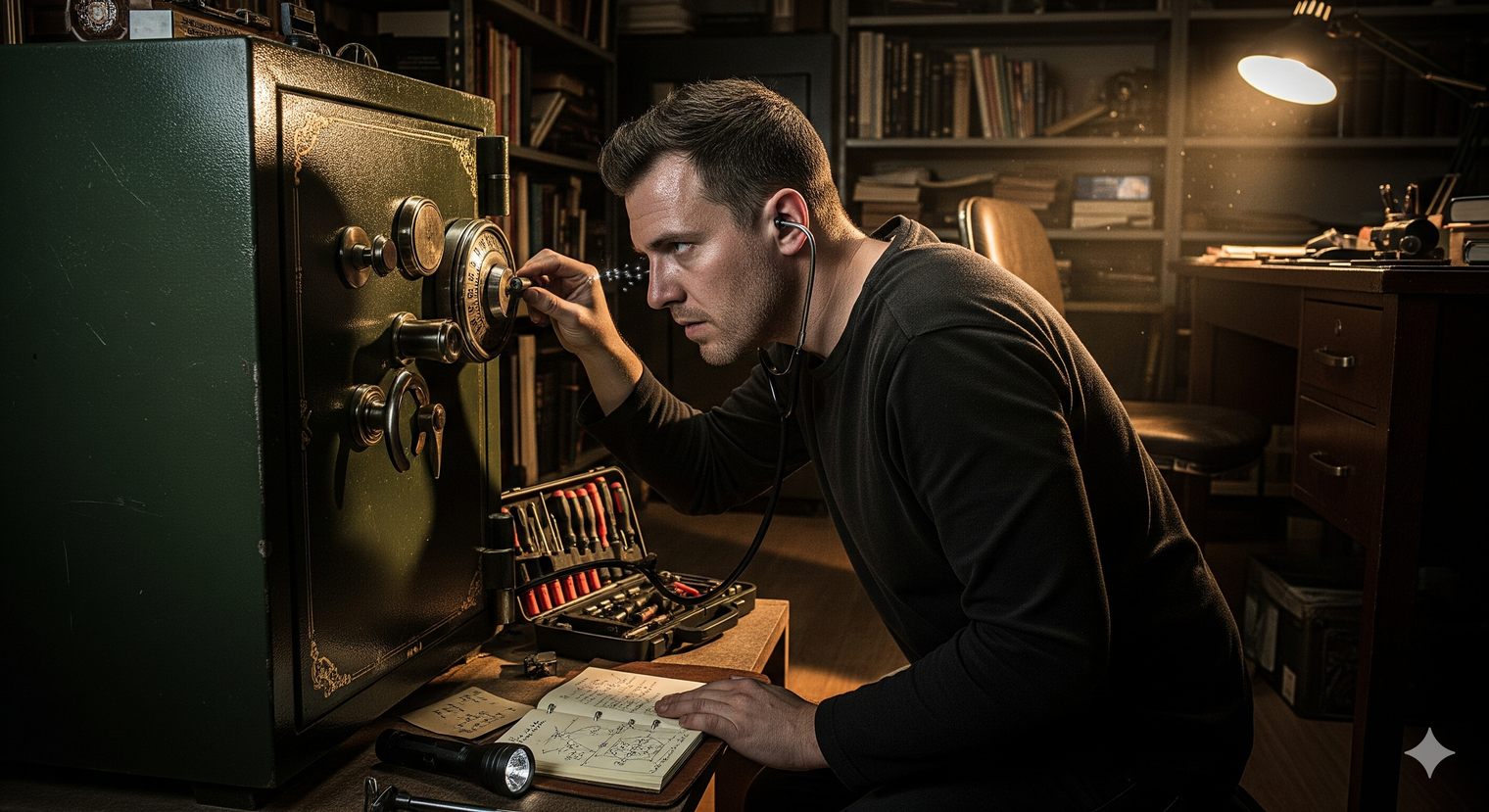Forgetting the combination to a safe can be a stressful experience, but don't panic. Before you resort to destructive methods, there are several effective, non-destructive ways to regain access. This guide will walk you through the process, from simple self-help methods to hiring a professional.
Step 1: Identify Your Safe Type
The method for opening your safe depends on its locking mechanism. You'll need to know whether you have a digital safe, a mechanical safe, or a key-operated safe.
-
Digital Safes: These have a keypad and often a battery compartment. Some models include a master key override.
-
Mechanical Safes: These use a traditional dial that you spin to a series of numbers.
-
Key-Operated Safes: The simplest type, these rely solely on a physical key.

Step 2: Try Self-Help Methods (Non-Destructive)
This is your first and best option. Always start with the simplest solutions.
For Digital Safes:
-
Check for a Factory Default Code: Many new, consumer-grade digital safes are set with a simple factory default code like 1-2-3-4, 0-0-0-0, or 1-2-3-4-5-6. Consult the owner's manual (if you have it) or search online for the default code for your specific model.
-
Look for a Master Key Override: Check your safe for a hidden keyhole, often located behind the keypad or a plastic logo plate. If you have the master key, you can bypass the combination entirely.
-
Use the "Red Button" Reset Method: A common feature on many digital safes is an internal reset button. With the door open and the batteries in place, look for a small red or black button inside the safe on the hinge side of the door. Pressing and holding this button can initiate a reset, allowing you to enter a new code. For some models, you may need to use the master key or the factory code to get the door open first.

For Mechanical Safes:
-
Check for a Change Key: High-security mechanical safes sometimes come with a "change key" that allows you to reset the combination while the door is open. If you have this key, you can follow the instructions in the safe's manual to set a new combination. This is a rare feature on lower-end safes.
-
Contact the Manufacturer: This is the most reliable self-help method. Major safe companies have a formal process for combination retrieval.
-
SentrySafe: You will need to fill out a notarized form, provide the model and serial numbers, and pay a fee.
-
Liberty Safe: This process also requires a notarized form and proof of ownership. They may also require a licensed locksmith or law enforcement officer to verify your ownership on-site.
-

Step 3: Hire a Professional Locksmith or Safe Technician
If all else fails, a professional is your safest bet. A certified safe technician has the tools and expertise to open your safe without damaging its contents.
The Process:
-
Find a Certified Professional: Look for a locksmith who specializes in safe and vault work. Organizations like the Safe and Vault Technicians Association (SAVTA) or the Associated Locksmiths of America (ALOA) maintain directories of certified professionals. Use online locators to find a reputable specialist in your area.
-
Provide Proof of Ownership: A professional will not open a safe without verifying that you are the rightful owner. Be prepared to show a photo ID and proof of purchase or a notarized statement of ownership.
-
Non-Destructive Entry: A skilled technician can often open the safe through safe manipulation. This is a highly technical, non-destructive method where the locksmith "listens" to the internal mechanisms to determine the combination. It takes time but ensures the safe can be used again. If manipulation is not possible, the technician may use a small-diameter drill to open the safe with minimal damage, which can later be repaired.

Legal and Safety Considerations
-
Never attempt to open a safe with destructive force. This can permanently damage the safe, destroy the contents, and even cause injury.
-
Locksmiths are legally and ethically required to verify ownership before opening a safe. This is a critical step to prevent theft.
-
Avoid DIY videos on drilling or prying. These methods are often dangerous, ineffective, and will ruin your safe.
By following these steps, you can avoid a stressful situation and safely regain access to your valuables.

